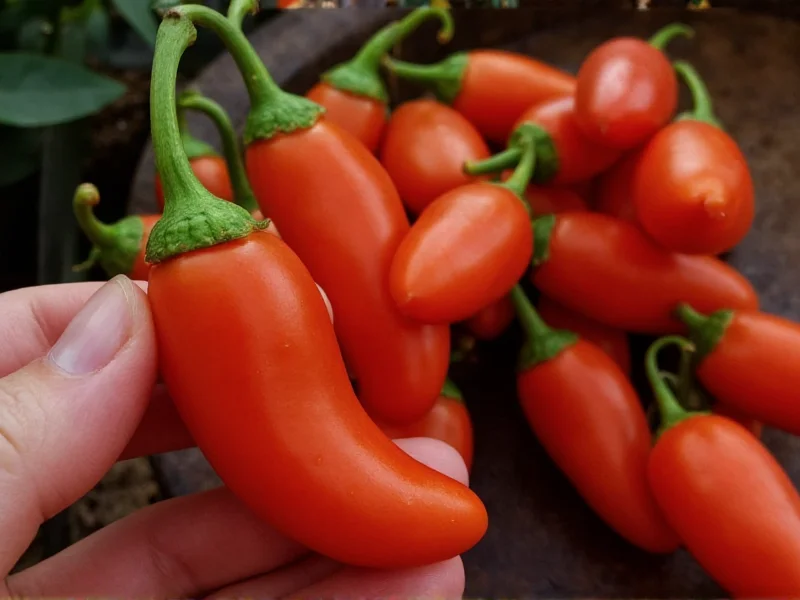Understanding the heat difference between these popular chili peppers is essential for home cooks and culinary professionals alike. The Scoville scale, developed by pharmacist Wilbur Scoville in 1912, remains the standard measurement for chili pepper heat intensity. This scientific measurement helps explain why substituting one pepper for another without adjustment can dramatically alter a dish's flavor profile.
| Pepper Type | Scoville Heat Units (SHU) | Relative Heat Compared to Jalapeño | Common Culinary Uses |
|---|---|---|---|
| Serrano | 10,000-23,000 | 2-9x hotter | Salsas, guacamole, pickled preparations |
| Jalapeño | 2,500-8,000 | Baseline | Stuffed peppers, nachos, poppers, sauces |
Understanding the Science Behind Pepper Heat
The heat in chili peppers comes from capsaicinoids, primarily capsaicin, which trigger thermal receptors in our mouths. Serranos contain higher concentrations of these compounds than jalapeños, explaining their greater heat intensity. When comparing serrano vs jalapeno heat levels, it's important to note that heat can vary within each pepper type based on growing conditions, soil composition, and climate.
Factors That Influence Heat Perception
Several elements affect how we experience the heat difference between these peppers:
- Ripeness: As both peppers mature and change color from green to red, their heat levels increase
- Seeds and membranes: The placenta (white ribs) and seeds contain the highest concentration of capsaicin
- Growing conditions: Stressors like drought can increase capsaicin production
- Individual tolerance: Personal heat sensitivity varies significantly among consumers
Physical Characteristics Comparison
Beyond heat levels, serranos and jalapeños differ in several physical aspects that impact culinary use:
- Size and shape: Serranos are smaller (1-2.5 inches), slender, and tapered, while jalapeños are larger (2-3.5 inches) and more bulbous
- Wall thickness: Jalapeños have thicker walls, making them better for stuffing, while serranos have thinner walls ideal for blending into sauces
- Flavor profile: Serranos offer a brighter, grassier flavor, while jalapeños provide a more earthy, vegetal taste with fruitier notes when ripe
Practical Substitution Guidance
When considering whether to substitute serrano for jalapeno in recipes, understanding the serrano jalapeno heat difference explained through practical application is crucial. If a recipe calls for jalapeños but you only have serranos, use approximately one-third to one-half the amount of serranos to achieve similar heat levels. Conversely, if substituting jalapeños for serranos, you may need to double or triple the quantity.
Chefs often recommend removing seeds and membranes from serranos when a milder heat is desired, while keeping them intact in jalapeños can boost their heat closer to the lower end of the serrano range. This knowledge helps address the common question of how much hotter are serrano peppers than jalapenos in real cooking scenarios.
Common Misconceptions About Pepper Heat
Many home cooks mistakenly believe that smaller peppers are always milder, but with serranos and jalapeños, the opposite is true. The serrano vs jalapeno heat comparison often confuses people because serranos are smaller yet significantly hotter. Another misconception is that red peppers are always hotter than green ones, but color indicates ripeness rather than definitive heat level—both peppers increase in heat as they mature.
Understanding why are serrano peppers hotter than jalapeños involves recognizing that heat concentration relates to the pepper's biological purpose—deterring mammals while attracting birds for seed dispersal. Serranos have evolved with higher capsaicin concentrations as part of their natural defense mechanism.
Culinary Applications and Recommendations
Given the serrano pepper Scoville scale rating, these peppers work best in dishes where intense heat is desired without overwhelming volume. They're excellent for fresh salsas, guacamole, and pickled preparations where their bright flavor shines. Jalapeños, with their milder serrano jalapeno heat difference, are ideal for stuffing, nachos, and dishes where the pepper itself is a featured ingredient.
For those exploring Mexican cuisine, knowing whether serrano is hotter than jalapeno helps recreate authentic flavors. Traditional Mexican dishes often specify which pepper to use precisely because of their distinct heat profiles and flavor characteristics. When following authentic recipes, maintaining the specified pepper type ensures the intended flavor balance.











 浙公网安备
33010002000092号
浙公网安备
33010002000092号 浙B2-20120091-4
浙B2-20120091-4